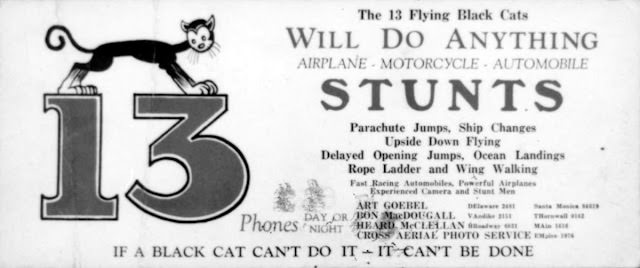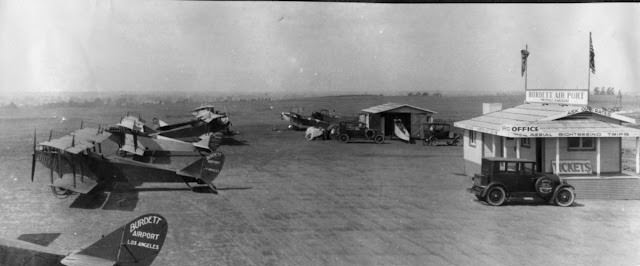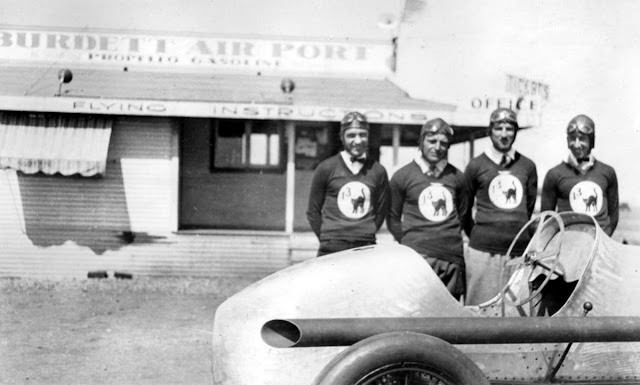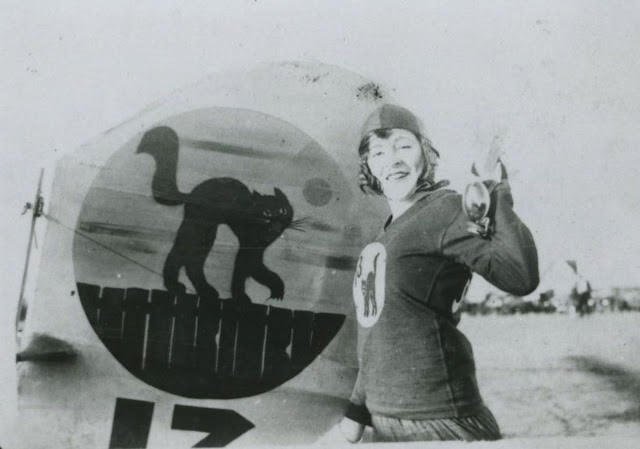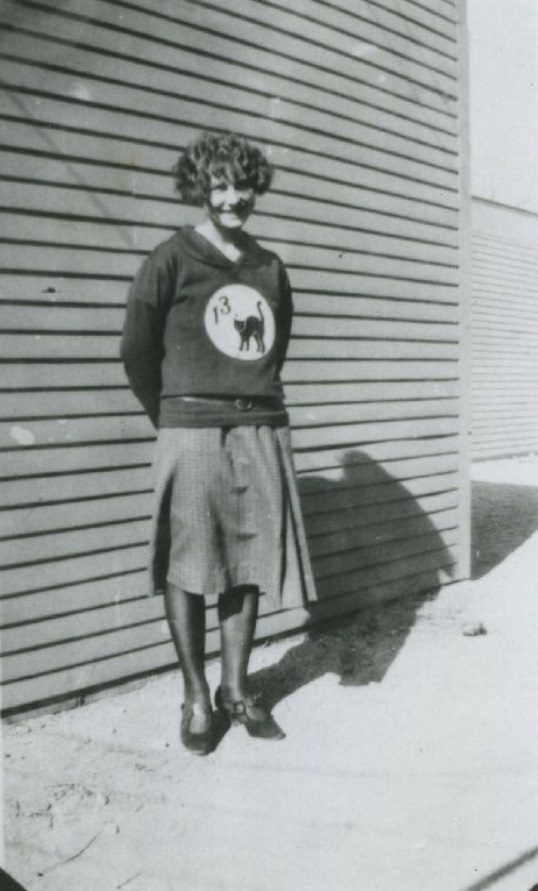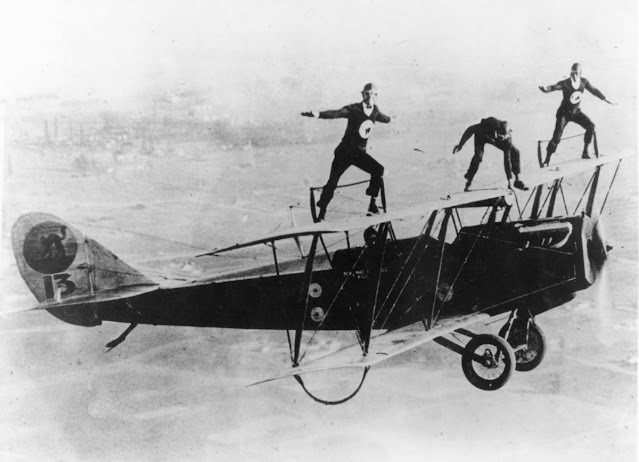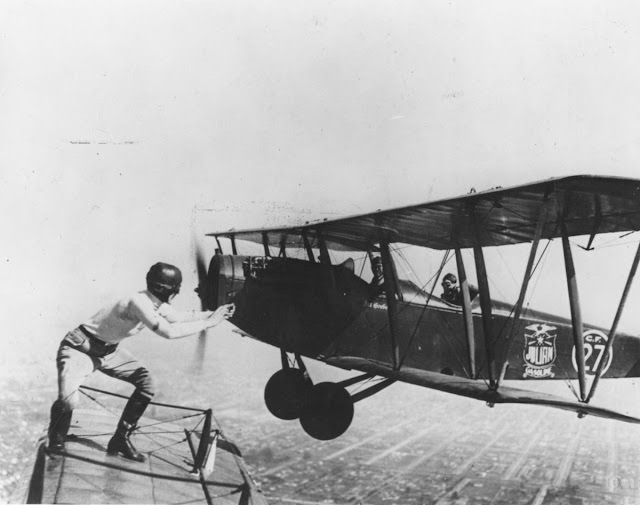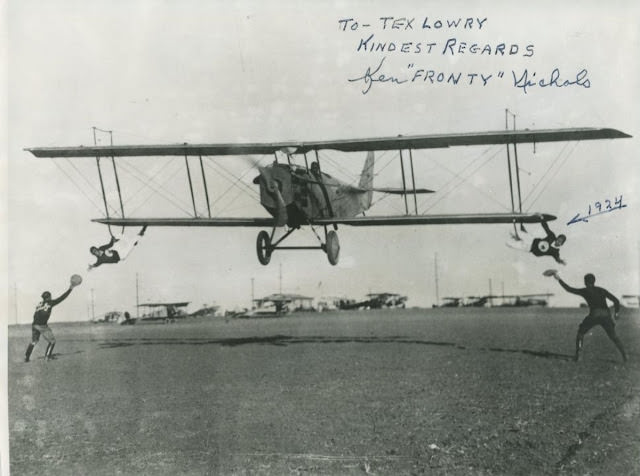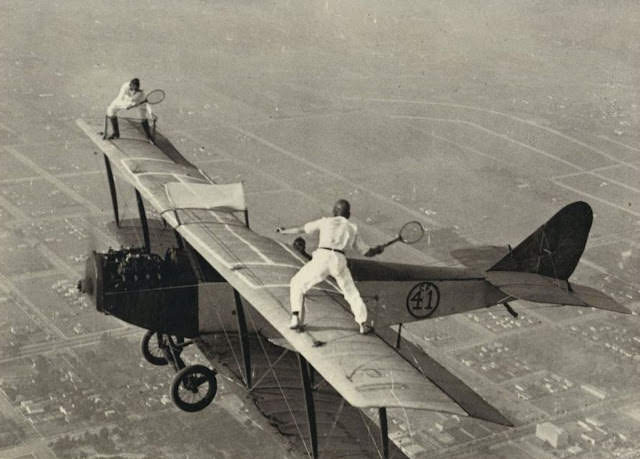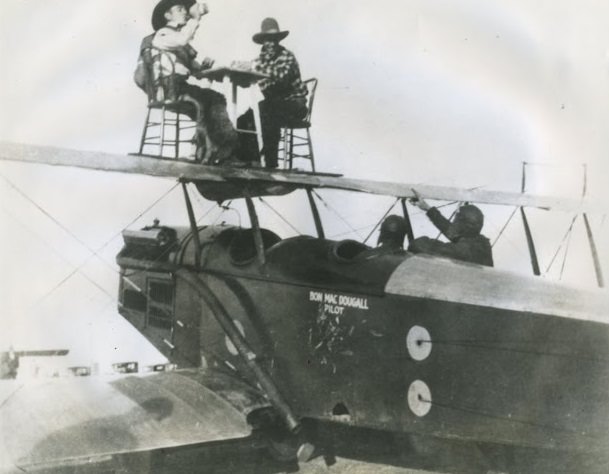In the vibrant era of the 1920s, the 13 Flying Black Cats emerged as the most daring exhibition team. Beginning around 1925, this group of aviators made a name for themselves with a bold proclamation: they would do anything for a price. Their performances, primarily around Los Angeles and the Southwest, captivated audiences at air shows and in movie newsreels, showcasing their remarkable aerial skills.
The roots of the 13 Flying Black Cats can be traced back to Burdett Airport, located at Western Avenue and 104th Street in Los Angeles, now known as Inglewood. This airport was a hub of activity, where many served as pilots and mechanics. It was founded by Burdett Fuller, a former Naval Reserve flyer, who established a flying school and passenger air service in 1919. Key figures in the formation of the team included Ronald “Bon” MacDougall, Jack Frye, William E. Matlock, Paul E. Richter, and Ken Nichols, all of whom trained or worked at Burdett Airport.
The team’s rise to fame was marked by an event on July 5, 1925, known as the “Burdett Field Air Meet.” This event drew thousands of spectators to witness air races and stunt flying exhibitions. The 13 Flying Black Cats, along with other aviators like Frank Clarke, Art Goebel, and Dick Grace, performed breathtaking aerial stunts, capturing the imagination of the audience, and solidifying their reputation as skilled aerial performers.
The 13 Flying Black Cats was an evolving group with many members, including women who, while never official members, contributed significantly to the team’s success. Due to the fluid nature of the group, many participants did not receive the recognition they deserved. This dynamic team structure reflected the adventurous spirit of the era and the ever-changing world of aviation.
Innovative Stunts and Pricing
The Black Cats were known for their innovative and thrilling stunts. They charged $100 for an ordinary plane-change stunt and $500 for a more complex maneuver involving changing from an upside-down aircraft to one flying right side up. One of their most dramatic acts involved a faked accident, where the apparent victim would fall off the aircraft and tumble about 400 feet before a hidden parachute, attached to a thin cable invisible to the audience, was deployed. This stunt always elicited gasps of relief from the crowd.
#1 13 Black Cats business card with Art Goebel, Bon MacDougall, Heard McClellan, Cross Aerial Photo Service.
#2 The Burdett Airport – home of the famous 13 Flying Black Cats, ca. 1924.
#3 Standing in front of the Burdett Air Port office and wearing their “Black Cat” sweaters.
#4 The 13 Flying Black Cats.
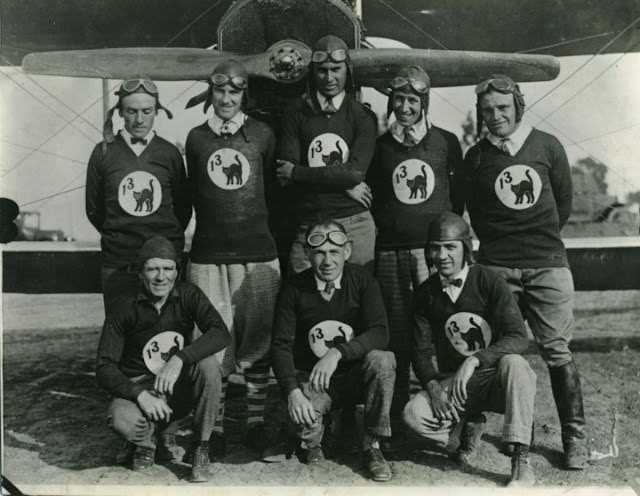
Standing left to right: Al Johnson, Bon MacDougall, Art Goebel, Ken “Fronty” Nichols, and Paul Richter; kneeling left to right: Heard McClellan, Sam Greenwald, and Spider Matlock. Other members not pictured are Reginald Denny, Ivan Unger, Gladys Ingle, Freddy Osborne, George “Slim” Maves, Jerry Phillips, “Loot” Barber, Howard Batt, and cameramen Jerry Tabnac and Bill Stapp.
#5 Wing walker, Gladys Roy (1896-1927) was an accomplished parachute jumper and movie stunt actress.
#6 Portrait of Gladys Roy (1896-1927).
#7 Bon MacDougall pilots while three Black Cats, from left to right, “Spider” Matlock, Al Johnson, and “Fronty” Nichols, balance on the upper wing. A smoke generator is under the nose of the airplane.
#8 On this autographed photo of Gladys Gertrude Ingle (1899-1981) preparing to transfer from Bon MacDougall’s plane to Art Goebel’s plane.
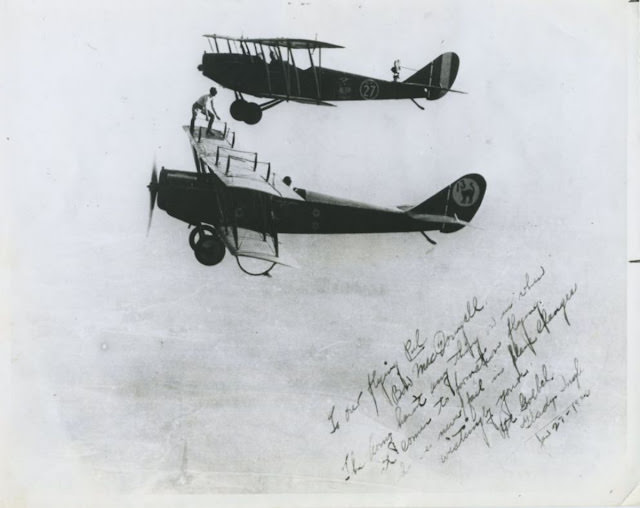
The inscription reads, “To our flying Pal, Bon MacDougall, The Army hasn’t anything on us when it comes to formation flying. And we never fail in plane changes. Aviatingly yours, Art Goebel, Gladys Ingle, Jan 27 - 1926.” Note the motion picture camera mounted on the rear fuselage of Curtiss Jenny #27.


